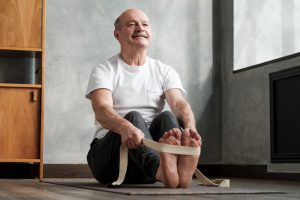 New research shows how a specific exercise regimen could reduce chronic lower back pain. This innovative, new program includes motor skills training, also known as MST. By learning new, practical, and less painful ways to move, individuals may find their days less painful.
New research shows how a specific exercise regimen could reduce chronic lower back pain. This innovative, new program includes motor skills training, also known as MST. By learning new, practical, and less painful ways to move, individuals may find their days less painful.
Lower back pain is the number one cause of disability in the US and is the most frequent cause of chronic pain among American adults. It is estimated that at least 60% to 80% of all adults will experience lower back pain, and almost half will have a major episode by age 30.
Advertisement
Currently, there is no accepted standard of care or suggested exercises for patients with lower back pain. This new study, however, suggests a new form of exercise that could become a standard form of exercise for those with lower back pain.
Participants who had struggled with lower back pain for at least a year were selected for the study. These patients had “non-specific” lower back pain, meaning they have tension, stiffness, or soreness, for which there is no apparent cause. They ranged in age from 18 to 60 and were randomly divided into two groups. One group received a commonly suggested exercise intervention, which involves strength and flexibility treatment for the trunk and lower limbs. The second group took part in MST, which teaches patients new ways to carry out everyday tasks rendered difficult by back pain.
MST is different from other exercise programs. It aims to zero in on each patient’s personal posture and movements throughout an entire day and then tailor pain-free movement strategies to their specific routines.
Both groups received six weeks of training for one her per week. Each participant was required to complete disability questionnaires at the outset and six months and one year out.
Normal Daily Activities Resumed
It was found that both groups improved their ability to perform daily functions without pain, but the MST group achieved significantly better gain over the study period. They were found to be more satisfied with their care and less likely to use drugs for back pain. Their questionnaires also revealed that they were less likely to avoid normal daily activities and were less fearful of addressing work-related needs.
Advertisement
After long term follow-up, MST participants reported fewer acute back pain flare-ups and were more likely to keep up with exercises. After a year, they also found less severe symptoms when back pain did flare-up.
While many experts believe MST to be a good exercise regime for lower back pain, Dr. Daniel Park shared his viewpoint. “I think any structured therapy can be beneficial, because you want the muscles moving and working to help with back pain. We used to think rest and relaxation was better. But studies show only short-term rest is beneficial, and actually if you rest too long, you can have worse outcomes.”
He believes that doctors should advise patients to rest for the short term and then to begin an exercise routine to start exercising the muscles. As with all programs, talk to your doctor before beginning any exercise if you experience chronic low back pain.
